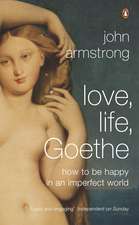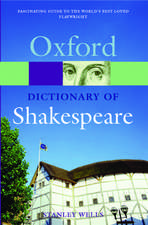Romantic Paganism: The Politics of Ecstasy in the Shelley Circle: The New Antiquity
Autor Suzanne L. Barnetten Limba Engleză Hardback – 15 feb 2018
| Toate formatele și edițiile | Preț | Express |
|---|---|---|
| Paperback (1) | 695.53 lei 6-8 săpt. | |
| Springer International Publishing – 6 iun 2019 | 695.53 lei 6-8 săpt. | |
| Hardback (1) | 700.94 lei 6-8 săpt. | |
| Springer International Publishing – 15 feb 2018 | 700.94 lei 6-8 săpt. |
Preț: 700.94 lei
Preț vechi: 824.63 lei
-15% Nou
Puncte Express: 1051
Preț estimativ în valută:
134.17€ • 145.78$ • 112.77£
134.17€ • 145.78$ • 112.77£
Carte tipărită la comandă
Livrare economică 21 aprilie-05 mai
Preluare comenzi: 021 569.72.76
Specificații
ISBN-13: 9783319547220
ISBN-10: 3319547224
Pagini: 273
Ilustrații: XIII, 305 p. 3 illus.
Dimensiuni: 148 x 210 mm
Greutate: 0.53 kg
Ediția:1st ed. 2017
Editura: Springer International Publishing
Colecția Palgrave Macmillan
Seria The New Antiquity
Locul publicării:Cham, Switzerland
ISBN-10: 3319547224
Pagini: 273
Ilustrații: XIII, 305 p. 3 illus.
Dimensiuni: 148 x 210 mm
Greutate: 0.53 kg
Ediția:1st ed. 2017
Editura: Springer International Publishing
Colecția Palgrave Macmillan
Seria The New Antiquity
Locul publicării:Cham, Switzerland
Cuprins
Acknowledgements.- List of Figures.- List of Abbreviations.- Introduction: Pretty Paganisms and Satanic Schools.- 1. “The wrecks of the Greek mythology”: Paganism, Popishness, Atheism, and Decadence in the Eighteenth Century.- 2. “Cheerfulness and a sense of justice”: Dionysus, Nympholepsy, and the Religion of Joy.- 3. “Prattling about Greece and Rome”: Paganism, Presumption, and Gender.- 4. “The great God Pan is alive again”: Peacock and Shelley in Marlow.- 5. Shelley’s “Perpetual Orphic Song”: Music as Pagan Ideology in Prometheus Unbound.- 6. Afterword: The Afterlives of Romantic Paganism.- Bibliography.- Index.
Notă biografică
Suzanne L. Barnett is Assistant Professor of English at Francis Marion University in South Carolina, USA.
Textul de pe ultima copertă
This book addresses the function of the classical world in the cultural imaginations of the second generation of romantic writers: Percy Shelley, Mary Shelley, Thomas Love Peacock, John Keats, Leigh Hunt, and the rest of their diverse circle. The younger romantics inherited impressions of the ancient world colored by the previous century, in which classical studies experienced a resurgence, the emerging field of comparative mythography investigated the relationship between Christianity and its predecessors, and scientific and archaeological discoveries began to shed unprecedented light on the ancient world. The Shelley circle embraced a specifically pagan ancient world of excess, joy, and ecstatic experiences that test the boundaries between self and other. Though dubbed the “Satanic School” by Robert Southey, this circle instead thought of itself as “Athenian” and frequently employed mythology and imagery from the classical world that was characterized not by philosophy and reason butby wildness, excess, and ecstatic experiences.
Caracteristici
Addresses, for the first time, the role played by a specifically wild and ecstatic paganism (as opposed to “Hellenism” or “classicism”) in British Romanticism Explores the idea that the Shelley circle self-consciously adopts paganism as a symbolic embrace of chaos Makes groundbreaking use of the younger romantics’ journals and correspondence

























